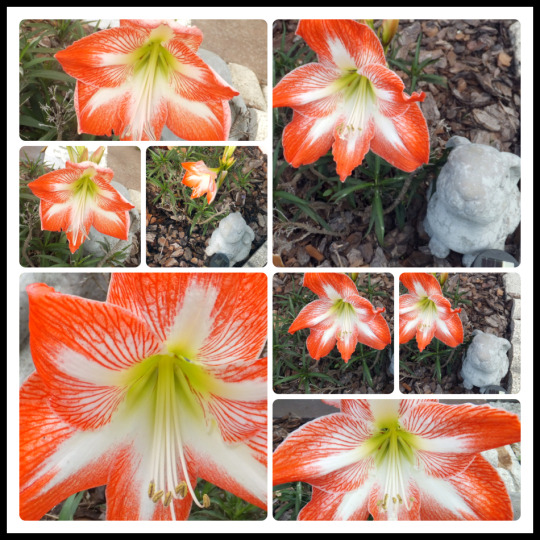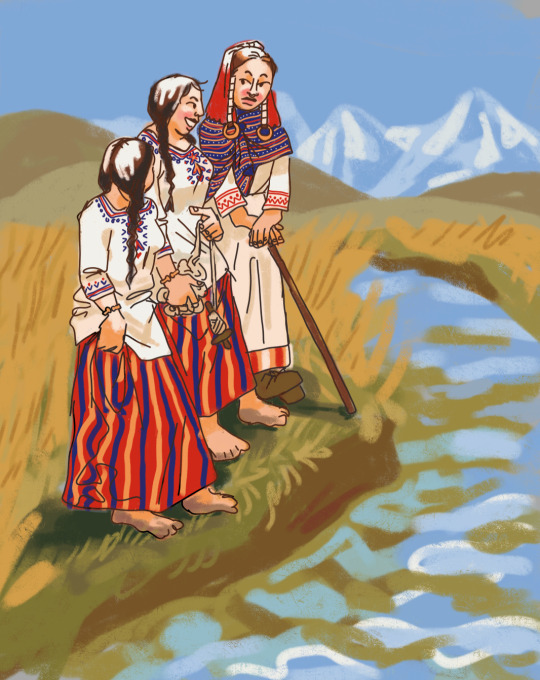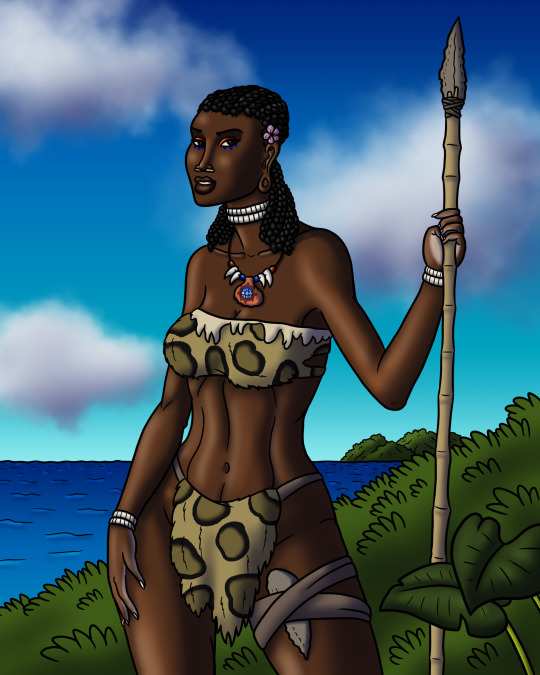#semitropic
Photo

June Garden Floral Surprises In Central Florida
I live in Central Florida, growing zone 9B which is semi-tropical. Amaryllis is a subtropical bulb that belongs to the Amaryllidaceae family and is native to South Africa. It is grown as a potted plant in most parts of the United States but can also be grown outdoors year round in warm areas like Florida. Amaryllis sold at Christmas are FORCED bulbs.
#garden#tropical#subtropical#subtropicalblooms#subtropical bulb#subtropical flowers#amaryllis#amaryllis flowers#red and white amaryllis#June garden#Florida#Florida garden#central Florida garden#semitropical
6 notes
·
View notes
Text
Chapter 3 of On Thin Ice is turning into a rant about proper gardening techniques help
#listen i am very passionate about tropical-semitropical fruit trees and how to properly care for them#im writing i swear#scraps posts#oti
2 notes
·
View notes
Text
and if i hear any of u cunts say "oh 10 celsius isnt cold thats light jacket weather and normal in shittsburg, massachusetts" ill start killing people
9 notes
·
View notes
Text
When the writer freaks herself out

I’ve been working on an entry for Food and Cooking of the Middle Kingdoms this afternoon. It’s a recipe for honey-candied apples (which appear as a sweet on a farmhouse dinner table in Tales of the Five 2: The Landlady). (With cream, and an imported apple-based spirit.)
So this is part of what I wrote:
On our Earth there are only a few species of bees that make honey—or more accurately, enough honey for humans to safely harvest without harming the colonies from which it’s obtained. One of these, and the one most kept for commercial uses both here and in the Four Realms, is Apis mellifera: what we call the Western or European honey bee. However, the Kingdoms’ continent is shared with their version of A. mellifera by two other honey-making species.
Widespread in the cooler southern regions is a larger variant of the eastern- and southeast-Asian giant honey bee, Apis dorsata, which builds tremendous comb-filled nests in trees of the southern Darthene and Arlene mountain-cedar forests, and on cliffs in the Steldene Southpeak foothills. (Apis dorsata medioregnis, fortunately, does not entirely share the blindly vicious temperament of its Earth-based congener.) Meanwhile, in the semitropical northern regions, a variant of the stingless bee Tetragonula mellipes is widespread from the mouths of the Darst and the northern shorelands of the eastern Waste, right along the Darthene northern Seaboard to the North Arlene peninsula. Because of its higher water content and low glycemic index, this bee’s honey is runnier and less sweet-tasting than that of A. mellifera and A. dorsata, but also has a unique tangy/citrus flavor that’s much prized.
So there we go, thinks the writer. That’s enough worldbuilding for the moment. Now we can get on to the recipe.
...Or not. As without warning, things go a bit green and dark in the writer’s head, and she suddenly sees what she’s just installed in her unsuspecting world:
...Forests. Mountain forests. In this one, unnumbered broad-canopied cedars are the uprearing deep-ribbed pillars of a high, shadowy-roofed cathedral a league and more wide. And suspended from the branches, almost completely hiding the upper reaches of the trunks, hanging pendulous and tremendous from the branches, in swags and curtains an arm’s-length thick... the hives.
There may be twenty or fifty of these in a single tree... maybe a hundred or more, in the oldest and tallest of the forest monarchs. And the hives are as social among themselves as the bees who live in them. The queens of a tree’s many hives make up their own small self-aware swarm. They have ways of communicating without ever leaving their hives. Some say their souls speak together, and with the queens of other trees’ hives... soundless, wordless, needing no words to discuss what matters to them: the prosperity and the safety of their colonies and their kind.
The naked hives themselves, and the brood-combs and honeycombs inside them, are not easy to see. This is because each hive is covered a handspan thick by a hundred thousand warrior-workers or more, endlessly alert for danger. Even the average worker giant bee is the length of the top joint of your thumb; the warriors can be twice that size. These too have obscure modes of communication that bind them together. If an enemy approaches, all the warrior bees of a whole tree’s hives will rise together to defend their homes. All together, they will fall on the marauder and cloak it as thickly in their furious bodies as any hive... and then will come the stings.
Fortunately you will hear the hives singing long before you see them. If you hurry, you will still have time to turn back before the scout-bees find you.
If you are hunting their honey, though, your only chance of escaping unharmed is to make the bees understand that that you have not come to harm their brood, but only to harvest and share some of the honey they do not need. You cannot lie to them. If you do, they will know.
So when you meet them, speak to the bees. Tell them what you desire... and pray that you speak truly.
...
And meanwhile, a long way away from the forests in the foothills of the Southpeaks, a writer sits staring at the computer screen and thinking:
WHERE THE HELL DID THAT COME FROM?!
...And then goes off to get some tea.
With SUGAR.
281 notes
·
View notes
Text
Tyrannosaurus versus Sierraceratops

In the semitropical forests of Late Cretaceous North America around 70 million years ago, Tyrannosaurus mcraeensis battles the ceratopsian Sierraceratops turneri. T. mcraeensis is a proposed species within the Tyrannosaurus genus based on a specimen from New Mexico’s Hall Lake Formation that may date between 72 and 70 million years ago. Its species name may not be as evocative or catchy as that of T. rex, but the two species seem to have been of similar size and power, so T. mcraeensis deserves some respect too (if it is a valid species after all).
#tyrannosaurus mcraeensis#tyrannosaurus#tyrannosaurid#sierraceratops#ceratopsian#dinosaurs#prehistoric#mesozoic#cretaceous#paleoart#illustration#digital art#art
12 notes
·
View notes
Text

Golden Age of Atlantis
The natural resources of Atlantis were apparently limitless. Precious metals were mined, wild animals domesticated, and perfumes distilled from its fragrant flowers. While enjoying the abundance natural to their semitropic location, the Atlanteans employed themselves also in the erection of palaces, temples, and docks. They bridged the zones of sea and later dug a deep canal to connect the outer ocean with the central island, where stood the palaces And temple of Poseidon, which excelled all other structures in magnificence. A network of bridges and canals was created by the Atlanteans to unite the various parts of their kingdom.
Mahaboka, m/j
33 notes
·
View notes
Text

On this day:
OERA LINDA BOOK
On or about April 19, 1820, Aafje Meylhoff— nee Oera Linda—took possession of an old manuscript, part of her ten-year-old nephew Cornelius's inheritance, and hid it. The mysterious Oera Linda Bok, a mix of historical document and magical grimoire, had been in the family since the sixth century BC. In 1848, a much older Cornelius took the manuscript to Dr. D. Verwijs, who determined that it had been written on cotton paper using iron-free black ink, and had been copied in 1256 from a previous document.
This bewildering book tells of a northern continent called Atland (not Atlantis), a semicircular land mass off the Netherlands' Frisian coast. It had a semitropical climate, abundant food, and peaceful people until 2193 BC, when a great catastrophe destroyed the island. Some of the inhabitants survived and moved south.
The era Linda Bok covers many topics. Some include:
* the Greek hero Ulysses visiting Atland in search of a sacred lamp that would make him king of Italy;
* numerical symbols coming from ancient Frisian language rather than Arabic;
* Atland's use of Britain as a penal colony;
* Atland's legendary founder, a half-mythical woman named Frya;
* a warrior named Friso, an officer of Alexander the Great and an offspring of the Frisians who went south after the disaster to Punjab, India, about 1550 BC.
Dr. Verwijs wanted the book published. The first publisher condemned it as a hoax, but in 1876 a respectable London publisher released it, with the original Frisian script printed alongside an English version, under the title The Oera Linda Book: From a Manuscript of the Thirteenth Century.
The Oera Linda Bok comprises six "books" though only one of the six is actually a book. The Oera Linda Book: From a Manuscript of the Thirteenth Century.
The Oera Linda Bok comprises six "books" though only one of the six is actually a book. Four are classed as writings, and one is a compilation of two letters written centuries apart. Four are classed as writings, and one is a compilation of two letters written centuries apart.
Text from: Almanac of the Infamous, the Incredible, and the Ignored by Juanita Rose Violins, published by Weiser Books, 2009
3 notes
·
View notes
Text
Tarantulas on the Lifebuoy - Thomas Lux - USA
For some semitropical reason��
when the rains fall
relentlessly they fall
into swimming pools, these otherwise
bright and scary
arachnids. They can swim
a little, but not for long
and they can’t climb the ladder out.
They usually drown—but
if you want their favor,
if you believe there is justice,
a reward for not loving
the death of ugly
and even dangerous (the eel, hog snake,
rats) creatures, if
you believe these things, then
you would leave a lifebuoy
or two in your swimming pool at night.
And in the morning
you would haul ashore
the huddled, hairy survivors
and escort them
back to the bush, and know,
be assured that at least these saved,
as individuals, would not turn up
again someday
in your hat, drawer,
or the tangled underworld
of your socks, and that even—
when your belief in justice
merges with your belief in dreams—
they may tell the others
in a sign language
four times as subtle
and complicated as man’s
that you are good,
that you love them,
that you would save them again.
#tarantulas on the lifebuoy#thomas lux#USA#United States of America#poem#poetry#poems from around the world
15 notes
·
View notes
Text
indolent gentlefolk of semitropical weather and malarial marshes
unable to focus. unable to read. on the train to new york. feeling some heat in my body but it is soft, it feels tender. like a flower, a chrysanthemum petal being pulled back gently with a pin, only to reveal its yellow textured insides.
i find that a lot of the things i do, i do in hope. two magical words: in hope. in hope that one day they’ll make sense, 5 to 10 years down the line. in hope that the woman i will become will thank younger me for being so brave, so free. in hope. i do a lot of things in hope. i’m always begging for more, it’s a destitute state for a life long wait. wearing my sapphire after a long time. it’s a risk i’m willing to take, to make this trip more than worth it. to write something prolific and profound, to write words that will be relevant, maybe finally allow me to finally see myself as a writer.
2 notes
·
View notes
Text


some young dzara women getting to know their new sister in law, and some concepts for people who live to the south of the empire. its a humid semitropical climate there, and they share the shores of a major lake with the esrahi.
#worldbuilding project#phone art#the sister in law is mostly wearing diffrent clothes cuz shes married . but the embroidery on her shirt is because she comes from a diffren#village than the other girls :)
28 notes
·
View notes
Note
“Tarantulas on the Lifebuoy” by Thomas Lux
For some semitropical reason
when the rains fall
relentlessly they fall
into swimming pools, these otherwise
bright and scary
arachnids. They can swim
a little, but not for long
and they can’t climb the ladder out.
They usually drown—but
if you want their favor,
if you believe there is justice,
a reward for not loving
the death of ugly
and even dangerous (the eel, hog snake,
rats) creatures, if
you believe these things, then
you would leave a lifebuoy
or two in your swimming pool at night.
And in the morning
you would haul ashore
the huddled, hairy survivors
and escort them
back to the bush, and know,
be assured that at least these saved,
as individuals, would not turn up
again someday
in your hat, drawer,
or the tangled underworld
of your socks, and that even—
when your belief in justice
merges with your belief in dreams—
they may tell the others
in a sign language
four times as subtle
and complicated as man’s
that you are good,
that you love them,
that you would save them again.
.
8 notes
·
View notes
Text
The republic of Masitochia
The republic of Masitochia, or simply Masitochia, is a prosperous democratic nation on the south coast of the continent. It's southernmost point extends to the base of the Marijan peninsula, its northernmost point a semitropical island in the Lake Amsa.
The Flag of Masitochia

Geographically, Masitochia is one of the largest nations on the continent, though it is smaller than the nation of Halaquflan and is roughly comparable to Saffranu, Corqafollain and a united Deskala Akri.
Geographically, much of Masitochian lands is forested, though the northern Mas lands are largely mixed grasslands with a few small deciduous woodlands and tropical marshes in the northernmost reaches. In the west, on the borders with Maelach and Deskala Akri, there lies the greatest mountain range, the Coski range, famous for its beautiful colors and famously harsh passes, which have historically protected the Masitochians from the historical Deskalan raids. Central easterm Masitochia is the home of the Quilan range, a less impressive but still significant mountain range that divides northern and Southern Masitochia. Southern Masitochia is the most inhabited and largest geographical region, boasting great stretches of woodland, vast flat plains, and plentiful water resources. In the southwest, lies the Nation's capital city, Facol Itoma, located on a major river near a lake. Facol Itoma has a long history and has, for centuries, been a major and significant place in the region. Farther to the south of Facol Itoma, you will come across the largest lake in the nation, Kiðik. A canal has been planned to connect the Deskalan and Marijian seas, and will use the Kiðik to connect east and west.
(Image: map of Masitochia, colored in orange)

In the current age, Masitochia exists as one of the most advanced and democratic nations in the world, in part because of it's dedication to maintaining high literacy rates and supporting its populace. This also has the side effect of attracting many of the greatest minds of many other nations, as intelligentsia across the world flock to the prosperous democratic nation. Migration is also a large part of Masitochia, as it is currently experiencing and encouraging perhaps one of the largest influx of immigrants ever recorded- hundreds, if not thousands of immigrants are accepted as citizens every day. This has resulted in a housing crisis, as you can imagine. One cannot visit a city without seeing massive housing complexes being built, alongside rows of tents and shanties. Despite this, the flow of immigrants has not faltered, in part because the State of Masitochia guarantees basic education for every immigrant.
Masitochia is no paradise, however. Inequality is ever present, the right to vote is only guaranteed to male citizens, and the political situation is, as you can imagine, very male-dominated. And, though the nation is markedly more tolerant than many others, the lack of immigrants in politics, even male, is painfully evident. Class struggles are equally as evident, the nation's capitalist system failing to aid the lower class and the homeless masses. Hope seems attainable, however. Women's suffrage protests are getting louder and harder to ignore, while the notion of gender roles themselves are being challenged by queer activists. The economic principles held by Masitochia are also being challenged, as Masitochia's western neighbor and young sister country, Maelach, has begun implementing socialist economic policies, as well as pushing for the same democratic government as Masitochia.
All around it, the world is changing. And Masitochia has proven in the past that it is more than capable of change. From kingdom to empire, from wounded kingdom, to proud republic. Masitochia stands tall as a beacon of progress.
2 notes
·
View notes
Text
Traveling in Asia Japan
Okinawa and the Southwest Islands
Islands in the East China Sea
Okinawa is a Japanese prefecture that consists of over 150 islands in the East China Sea between Taiwan and Japan’s mainland. The Southwest Islands are a chain of semitropical, coral-fringed islands with much beauty.
The Kerama Islands are three main islands – Zamami-jima, Aka-jima and Tokashiki-jima. These offer visitors lovely…

View On WordPress
0 notes
Text

This huntress represents the Changbinian culture, a hunter-gatherer culture that occupied the semitropical island of Taiwan between 30,000 and 6,000 years ago. Analysis of skeletal remains from the site of Xioma Cave dating to 6,000 years ago suggests that the people behind this culture were similar in phenotype to the short-statured, dark-skinned Negrito peoples aboriginal to much of Southeast Asia.
After that date, these indigenous Taiwanese would be absorbed by Proto-Austronesian peoples who migrated to Taiwan from the Asian mainland, followed by Han Chinese settlers in the 1660s whose descendents form the majority of the island’s population today. However, many of the Austronesian tribes remaining in Taiwan retain legends of “small black people” preceding them, and some Chinese documents from the era of the Qing Dynasty mention the presence of such Negrito-like people as well. Alas, no one has reported these people surviving in the present day to the best of my knowledge.
If you’re wondering what this woman’s loincloth is made out of, it is the hide of the extinct Formosan clouded leopard that used to live on Taiwan.
#taiwanese#taiwan#negrito#asian#black woman#woman of color#prehistoric#paleolithic#anthropology#archaeology#digital art#art
7 notes
·
View notes
Text
Japan's Flora
Agriculture and the introduction of exotic species have displaced most of the indigenous vegetation on the islands. The Ryukyu and Bonin archipelagoes are covered in semitropical rainforest, which contains mulberries, camphor, oaks, and ferns (including tree ferns); madder and lianas may be found with the undergrowth. This sort of plant life is only found in the Amami Islands' lowlands, but it flourishes at higher altitudes to the south.

The southern coast of Kyushu contains a few mangrove wetlands. The laurel forest zone, which includes evergreen, broad-leaved trees, runs from the southwestern islands to the northern Honshu plains. Camphor, pasanias, Japanese evergreen oaks, camellias, and hollies are common trees, with a variety of ferns as undergrowth. The evergreen zone reaches heights of more than 3,300 feet (1,000 metres) in Kyushu, although its vertical limit falls northeastward throughout Honshu. In general, camphor dominates the coastal lowlands, pasania in sunny and well-drained areas, and Japanese evergreen oak in foggy and overcast inlands. Ficus and fan palm trees grow in the southwestern Hondo area (western Honshu, Shikoku, and Kyushu). Pine trees dominate the coastal dune system.Natural stands of Japanese cedars, some with trees that are more than 2,000 years old, grow over 2,300 feet (700 metres) on Yaku Island, south of Kyushu.

Deciduous broad-leaved woods grow in the upper and more northern parts of the laurel forest zone. This type of woodland grows above 3,300 feet on Kyushu, but progressively lowers to sea level in northern Honshu. Its peak elevation is 6,000 feet (1,800 metres) in Shikoku and 5,000 feet (1,500 metres) in central Honshu. Representative trees include beeches, katsura trees, maples, oaks, and birches that rise above a bamboo thicket. All of these trees, but particularly the maples, are appreciated for their stunning autumn hues. The deciduous trees have been replaced by larches, false cypresses, false arborvitaes, Japanese cedars, Japanese red pines, Japanese black pines, and other coniferous species.
youtube
The deciduous zone extends into western Hokkaido, where beeches die on the southwestern peninsula and are replaced by basswoods and maples farther northeast. Some coniferous stands are mixed in with the zone's representative woods. Coniferous trees may be found up to 2,300 feet in elevation in Hokkaido's northern and eastern edge. Sakhalin spruces, Sakhalin firs, blue firs, and Yezo spruces thrive alongside deciduous trees including birches, oaks, and maples, as well as extensive undergrowth of mosses and lichens. Coniferous trees grow with deciduous vegetation in southern Hokkaido and in the higher elevations of central Honshu and Shikoku. Small bushes, creeping pines, and alpine plants thrive at elevations exceeding 8,000 feet (2,400 metres) in central Honshu's high mountain knots. This zone progressively declines northward to the Hakkōda Mountains in northern Honshu (4,600 feet/1,400 metres) and the Daisetsu Mountains in central Hokkaido (3,600 feet/1,100 metres). The cherry tree (sakura), known for its spring flowers and a long-standing emblem of Japan, is planted across the country. Many different types have been cultivated, and there are also wild stands in the highlands. Coniferous trees may be found up to 2,300 feet in elevation in Hokkaido's northern and eastern edge. Sakhalin spruces, Sakhalin firs, blue firs, and Yezo spruces thrive alongside deciduous trees including birches, oaks, and maples, as well as extensive undergrowth of mosses and lichens. Coniferous trees grow with deciduous vegetation in southern Hokkaido and in the higher elevations of central Honshu and Shikoku. Small bushes, creeping pines, and alpine plants thrive at elevations exceeding 8,000 feet (2,400 metres) in central Honshu's high mountain knots. This zone progressively declines northward to the Hakkōda Mountains in northern Honshu (4,600 feet/1,400 metres) and the Daisetsu Mountains in central Hokkaido (3,600 feet/1,100 metres). The cherry tree (sakura), known for its spring flowers and a long-standing emblem of Japan, is planted across the country. Many different types have been cultivated, and there are also wild stands in the highlands.
Havard referencing:
The Editors of Encyclopaedia Britannica. (1998). Japan flora. [Online]. britannica. Last Updated: 27 October 2023. Available at: https://www.britannica.com/place/Japan/Soils [Accessed 21 February 2024].
0 notes
